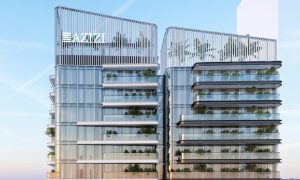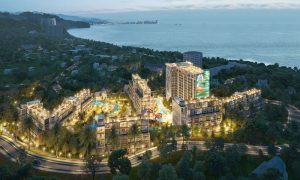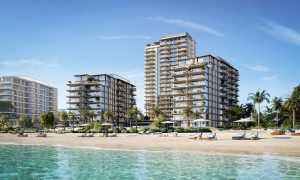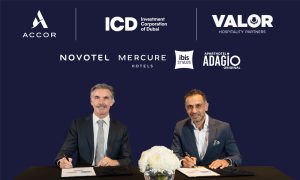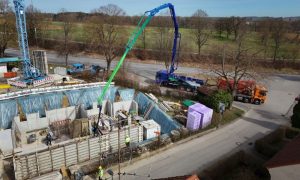Embracing the future of urban development
Mixed-use development pave the way for an urban renaissance writes Ravi Menon, Co-Chairman of Sobha Realty

As cities become denser and lifestyles get more integrated, urban planning places a greater emphasis on incorporating mixed-use development projects. This approach prioritises placemaking and sustainability, reflecting an increasing desire for diversification in order to future-proof property assets in a dynamic market. By seamlessly integrating various functions within a single area, such as residential, commercial, cultural, and leisure facilities, these projects can offer holistic living experiences that enrich the community and harmonise with the surrounding environment.
The idea of sustainable development has emerged as the most iconic, enigmatic, contentious and subversive concept in the last ten years of the twentieth century. In constant co-evolution and between quantity and quality of development, it promotes integration and balance between the economic, social, and environmental policy objectives (OECD 1999). Cities are thrust into the global stage of the future, thanks to the concept of urban sustainability, which can be exceptionally driven by the emerging trend of mixed-use developments.
In recent years, numerous developers are turning to mixed-use projects as the appeal of walkable urban surroundings grows. These projects typically combine office space, housing and retail space, occasionally with a hotel or community-serving uses. By including open space, pedestrian and transportation links, or ground-floor retail and dining alternatives, mixed-use projects contribute to enlivening the public environment. Furthermore, one of the ten guiding principles of ‘Smart Growth’, is a mixed-use planning approach that aims to promote community design and growth that benefits the economy, community, public health and environment.
Plentiful Benefits
One of the primary advantages of mixed-use developments is its ability to promote the local economy. It has the potential to bring together various aspects to create a diverse and vibrant environment that attracts a wide range of people. This, in turn, can lead to increased economic activity and job creation. In addition, mixed-use developments can help revitalise urban areas, which have often been neglected in the past.
Another benefit of mixed-use developments is its ability to offer an exceptional community living experience. By incorporating residential, commercial and cultural facilities within a single area, it creates a sense of community and provides residents with easy access to an array of amenities. This can be particularly beneficial for people who live in dense urban areas, where space is often scarce and expensive.
The Right Stuff
Mixed-use projects should be designed to integrate with their local surroundings rather than stand apart. It is essential to avoid duplicating existing offerings, although amenities within a single building are significant factors in attracting residents and building community. Vertical structures should seamlessly integrate various cohorts located on various levels with one another, along with the neighbourhood’s transportation infrastructure, such as metro lines, bus stops and other facilities.

Moreover, mixed-use developments often contribute to the economic vitality of a region by offering a variety of housing options and employment opportunities nearby. These developments provide an optimal balance between jobs, housing, and land usage, which further enables residents to maintain a sense of community living.
The mixed-use development approach further fosters several profitable residential, commercial, institutional and/or industrial uses to be housed in one building. As a result, there are a variety of residential units, retail spaces and cultural and entertainment venues available. The concept of horizontal mixed-use development entails combining single-use buildings with mixed-use developments. Moreover, combining businesses and residences in such a way allows for the development of a neighbourhood or even an emerging township.
However, it is crucial to remember that a successful combination is fruitful when it works well together, interacts favourably, and helps to create a society that is balanced and offers a wide range of services that are easily accessible. The different dimensions of buildings also enable distinctive uses to cooperate effectively. Similarly, with increased awareness of the impacts of climate change, urban mixed-use developments must also ensure opportunities for crucial climate mitigation strategies, including stormwater runoff control, sun shading, reduction in heat island effect, as well as water filtration and air purification facilities.
To ensure the long-term viability of mixed-use developments, it is essential to design flexible spaces that can adapt to evolving needs and demands. Currently, developers are placing an increasing emphasis on environment-friendly transportation options, such as integrated vehicle rental and public transportation, in response to the declining trend and evolving attitudes towards vehicle ownership. It not only addresses the present concerns, but also promotes a more sustainable influence for now and the future. These projects exemplify a forward-thinking approach that considers the needs of both present and future generations.
We, at Sobha Realty, recognise the soaring demand for integrated living and working environments in an ever-evolving real estate landscape. Mixed-use developments are expected to become more popular in the coming years, as an increasing number of people desire walkable neighbourhoods that encompass residential, professional, and recreational amenities. As one of the leading developers in the UAE, we understand that the fusion of residential, commercial and retail spaces is an irresistible magnet for buyers, paving the way for a truly transformative experience.
The transitioning trend towards mixed-use development projects is seen as a positive development for urban planning. These projects certainly have the potential to create thriving, sustainable urban communities by fostering local economies, offering a healthy living environment and placing a significant value on placemaking and sustainability as key long-term goals.
